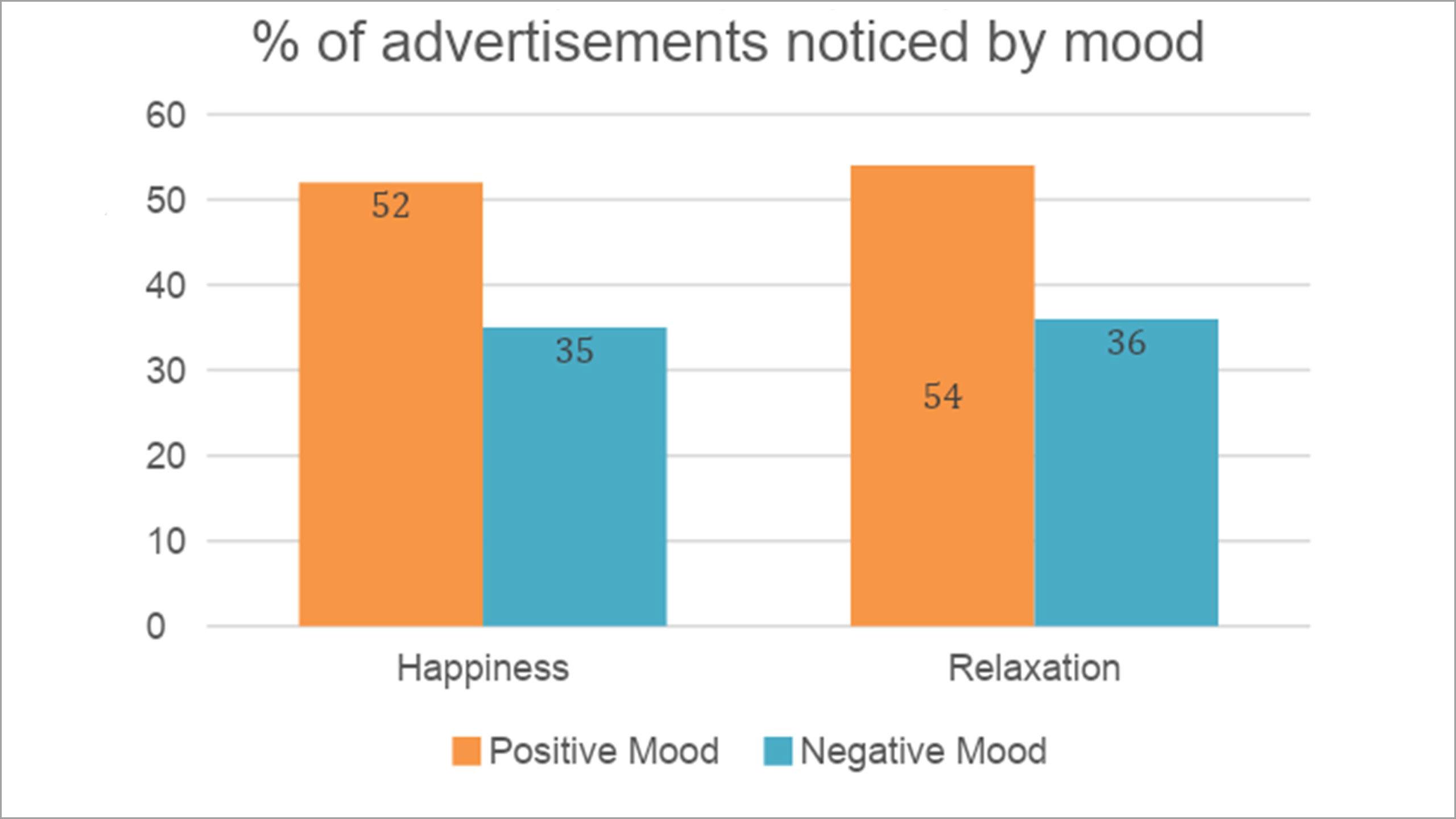Reaching people in positive moods can boost the likelihood that people notice, like and believe our ads. So why do so many marketers ignore its power? Joanna Stanley looks at the behavioural science behind mood, and offers ideas to optimise your next campaign.
In the story of the Good Samaritan, a Jewish man is attacked by bandits, who leave him for dead. A priest happens to walk past, followed by a Levite. Neither religious figure stops to help. However, a third traveller, a Samaritan, also passes by the beaten man. Samaritans stereotypically clashed with Jews, but moved by compassion, he offered assistance. He tended to the man’s wounds, took him to an inn and paid for his stay.
Usually, the parable is interpreted as illustrating how we should love others as ourselves – just as the Good Samaritan did. However, in their 1973 paper, John Darley and Daniel Batson from Princeton offer an alternative explanation. Rather than the priest and the Levite's poor dispositions, could their situation have accounted for their behaviour?
We can imagine both the priest and the Levite hurrying along the road to their next meeting, their mind preoccupied with religious duties. In contrast, the Samaritan likely had fewer responsibilities and a more relaxed schedule. So, rather than just being selfish, perhaps the priest and the Levite were just in a rush?
Darley and Batson decided to test their hypothesis. They replicated the parable with 40 theology students at the Princeton Seminary. First, they assessed the students' personalities by asking them to indicate whether they were studying theology for their own salvation or for the sake of others.
Next came the main part of the experiment. The researchers asked the students to deliver a sermon in a nearby church. However, before they left, they heard one of three things:
- “It’ll be a few minutes before they’re ready for you, but you might as well head on over…”
- “The assistant is ready for you, so please go right on over...”
- “Oh, you’re late. They were expecting you a few minutes ago… you’d better hurry..”
On their way, each student passed a man slumped in an alleyway, eyes closed, coughing and groaning. Meanwhile, an experimenter surreptitiously monitored which students stopped to help.
We’d expect most, if not all, of the students to offer assistance – after all, they were trainee priests. But that’s not what happened. Batson and Darley found that 63% of those who had plenty of time stopped, with 45% of those on a medium-tight schedule offering help. And, regrettably, only 10% of those who were late stopped. Importantly, they found that personality did not affect whether the students helped – it was only their situation that predicted their behaviour.
If you saw a trainee priest ignoring someone in need, perhaps you’d think it’s time for a career change. But Batson and Darley’s study suggests that often, context is more important.
In a later 1997 study, the two researchers showed participants a series of vignettes. They asked them whether personality or context would be more important in determining how someone would behave in the given situations. Participants consistently predicted personality would have more of an effect.
People’s misguided tendency to value personality over situation is called the fundamental attribution error. And importantly, us marketers are prone to this error too. Think of your last brief. One of the first things we consider is who we are targeting. While knowing your target audience is important, Batson and Darley’s study suggests we should put more time into thinking about when our audience receives messages.
Knowing the importance of context, how can we target moments when people are more receptive? Behavioural science offers many avenues. However, I want to focus on one that is overlooked: mood.
In the mood for messaging
Research suggests that reaching people in a good mood brings a multitude of benefits. First, it boosts noticeability. In 2007, Fred Bronner, a professor at the University of Amsterdam, asked 1,287 participants to look through a newspaper and indicate which ads they remembered. When Bronner split the data by people’s mood, he found that those who were happy recalled 52% of ads, whereas those who were unhappy noticed just 35%. Similarly, relaxed participants noticed 54% of ads, whereas those who were stressed saw only 36%.

Results from Bronner’s (2007) study
Second, reaching people in a positive mood boosts the chances that people like our messages. My colleague Richard Shotton showed 2,035 people an ad and asked them to indicate how much they liked it, as well as their general mood (on a scale where 0 = miserable, 10 = happy). When people were happy (scoring seven or more) he found they were 62% more likely to like the ad (21% vs 13%).
Similarly, in 1990, Rajeev Batra from the University of Michigan and Douglas Stayman from Cornell showed 253 participants an ad for a bank and asked them about their attitudes toward the brand (e.g. like / dislike, low quality / high quality, valuable / worthless on scales where 1 = unfavourable, 7 = favourable). They found that brand attitudes were 7% more favourable when people were in a positive mood (5.03 vs 4.68) compared to a neutral one. People in a good mood were also 17% less likely to produce counterarguments against the ad’s claims, suggesting that positivity is one route to believability.
Mood colours our perceptions. Reaching people in positive moods can boost the likelihood that people notice, like and believe our ads. And luckily, TV offers access to several moments when people are more likely to be feeling positive.
Target the moment
For example, viewers are more likely to be feeling positive and have more time in the evenings, on public holidays and on weekends – and according to Bronner’s study, particularly on Sundays. If you wanted more precise timings, IPA TouchPoints data tracks and identifies the times of day people are most likely to be happy.
Additionally, consider the programmes your ad runs around. Opt for lighthearted content, particularly those consumed in groups, rather than more serious editorials. In 2020, ITV and ResearchBods conducted research with 2,638 viewers. They found that brands advertising around feel-good shows benefited from the positivity that the shows created. Specifically, viewers in a good mood felt 40% more positive about the brands advertised after the show, compared to people who had not watched the programme and this halo effect continued for up to 96 hours.
But, marketers could also take a broader approach - rather than just targeting positive moments, create them.
Make the moment
Les Binet and Peter Field’s analysis of the IPA databank shows that ads creating an emotional reaction, including positive ones, tend to be more effective in the long term than rational ads. And importantly, evidence suggests that marketers only need to create a small amount of joy to reap the benefits.
In 1987, Norbert Schwarz from the University of Southern California asked people who had just finished photocopying to indicate how satisfied they were with their life. However, when half the participants arrived at the photocopier, they found 10 cents lying on the top. Those who picked up the coin rated their life satisfaction as 29% higher.
Schwarz’s research suggests that mood can be inflated by even tiny exposures to positivity. This is an achievable task for TV ads and one of importance. As marketer Martin Boase said:
“If you’re going to invite yourself into someone’s living room for thirty seconds, you have a duty not to bore them or insult them by shouting at them. On the other hand, if you can make them smile, or show them something interesting or enjoyable – if you’re a charming guest – then they might like you a bit better, and then they may be a little more likely to buy your product”.
Additionally, a 2019 report by Thinkbox suggests that TV ads induce more emotion than other media. Specifically, 58% of survey respondents noted that TV was the most likely place to view emotive advertising - over six times higher than the runners-up.
Mood is fundamental
The argument for integrating mood into your marketing is two-pronged. First, research suggests that targeting people in a good mood boosts the likelihood that people notice, like and trust brand messages. Second, evidence from the field suggests that creating positivity is a key route to success. And importantly, this positivity doesn’t need to be hugely significant to be effective. A slight boost is all it takes.
Even better, target and make the moment and you’ll amplify the effects.
TV offers the most convenient and effective means of accomplishing both objectives. So, on your next brief, think about how you can use TV to implement and marry these two considerations. According to Batson and Darley, optimise the ‘when’ and you’ll significantly increase the chance that your audience - like the Good Samaritan - will take the time to notice you.
 Thinkbox
Thinkbox
